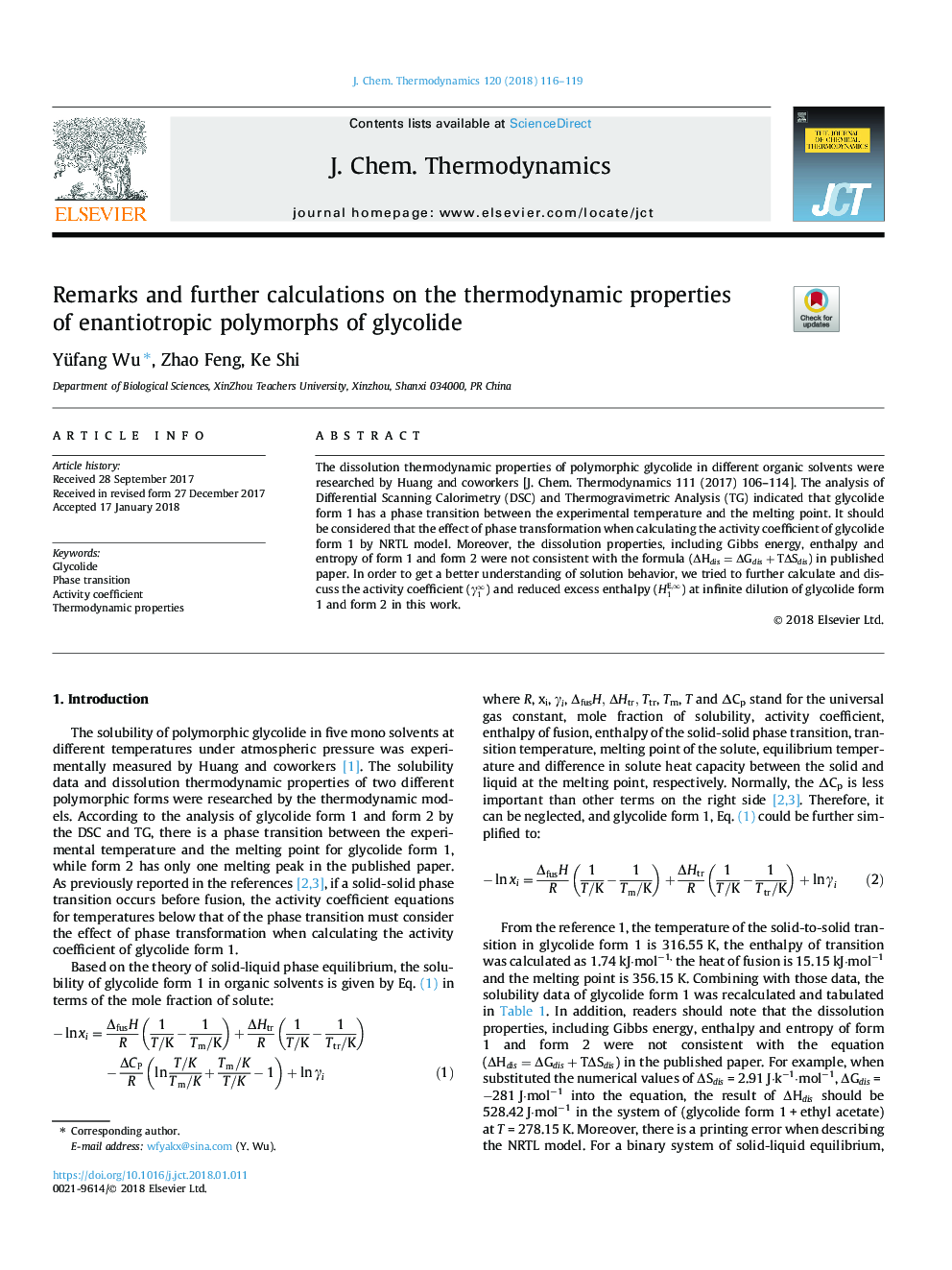| Article ID | Journal | Published Year | Pages | File Type |
|---|---|---|---|---|
| 6659803 | The Journal of Chemical Thermodynamics | 2018 | 4 Pages |
Abstract
The dissolution thermodynamic properties of polymorphic glycolide in different organic solvents were researched by Huang and coworkers [J. Chem. Thermodynamics 111 (2017) 106-114]. The analysis of Differential Scanning Calorimetry (DSC) and Thermogravimetric Analysis (TG) indicated that glycolide form 1 has a phase transition between the experimental temperature and the melting point. It should be considered that the effect of phase transformation when calculating the activity coefficient of glycolide form 1 by NRTL model. Moreover, the dissolution properties, including Gibbs energy, enthalpy and entropy of form 1 and form 2 were not consistent with the formula (ÎHdis=ÎGdis+TÎSdis) in published paper. In order to get a better understanding of solution behavior, we tried to further calculate and discuss the activity coefficient (γ1â) and reduced excess enthalpy (H1E,â) at infinite dilution of glycolide form 1 and form 2 in this work.
Related Topics
Physical Sciences and Engineering
Chemical Engineering
Chemical Engineering (General)
Authors
Yüfang Wu, Zhao Feng, Ke Shi,
